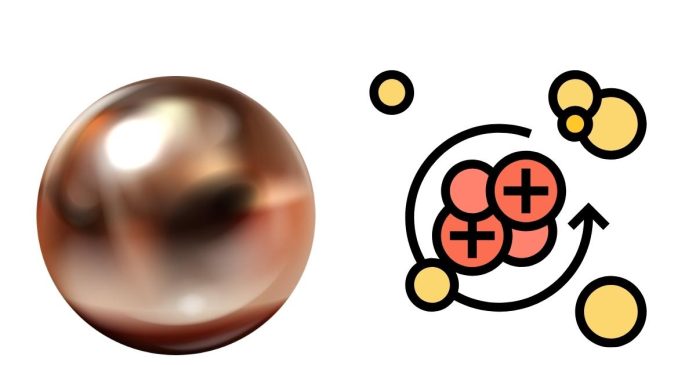The ionic charge of copper (Cu) can vary depending on the chemical compound it forms, as copper can have more than one oxidation state. The two most common ionic charges of copper are +1 and +2. Here’s how you can determine the charge:
1. Copper(I) – Cu⁺ (Copper with a +1 charge)
- Copper can lose one electron to form a Cu⁺ ion, which has a charge of +1. This oxidation state is known as Copper(I) or cuprous.
2. Copper(II) – Cu²⁺ (Copper with a +2 charge)
- Copper can also lose two electrons to form a Cu²⁺ ion, which has a charge of +2. This oxidation state is known as Copper(II) or cupric.
How to Determine the Ionic Charge of Copper:
- Look at the compound: The ionic charge of copper depends on the other elements it is bonding with. For example:
- In CuCl (copper(I) chloride), copper has a +1 charge, while in CuSO₄ (copper(II) sulfate), copper has a +2 charge.
- Use the rules for oxidation states:
- In compounds, the sum of the oxidation states (charges) of all elements must equal the overall charge of the molecule or ion.
- For example, in copper(II) sulfate CuSO₄, sulfur has an oxidation state of +6 (from the sulfate ion, SO₄²⁻), and oxygen has an oxidation state of -2. To balance the overall charge of 0 for the neutral molecule, copper must have a +2 charge.
- Context:
- If you’re dealing with a simple ionic compound, such as CuCl₂ (copper(II) chloride), the copper is most likely in the +2 oxidation state.
- If it’s Cu₂O (copper(I) oxide), copper is in the +1 oxidation state.
Summary:
- Copper can have two common ionic charges: +1 (Cu⁺) and +2 (Cu²⁺).
- To determine the charge, consider the specific compound it forms and the rules for oxidation states in ionic bonding.


